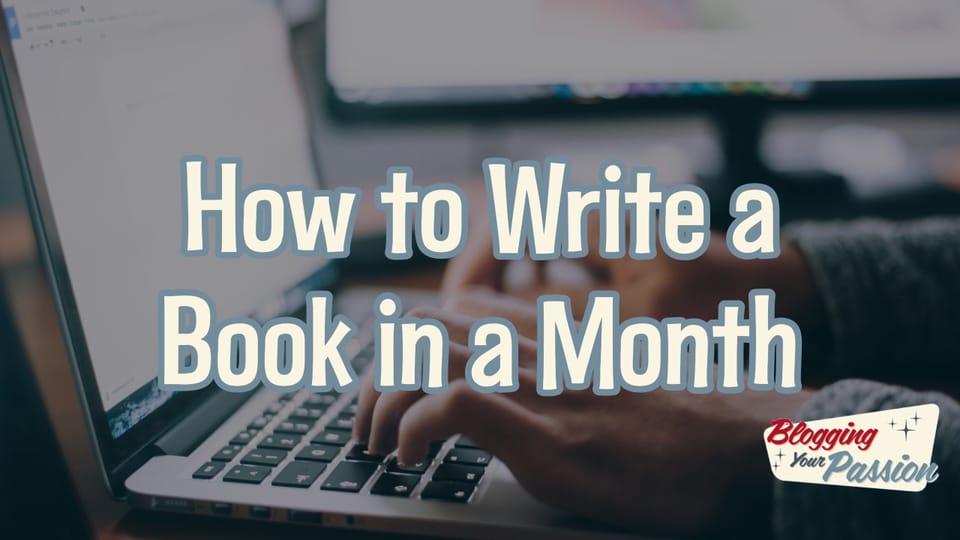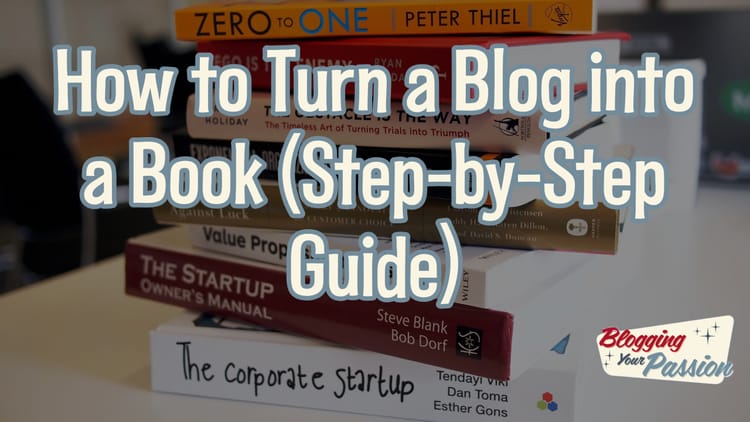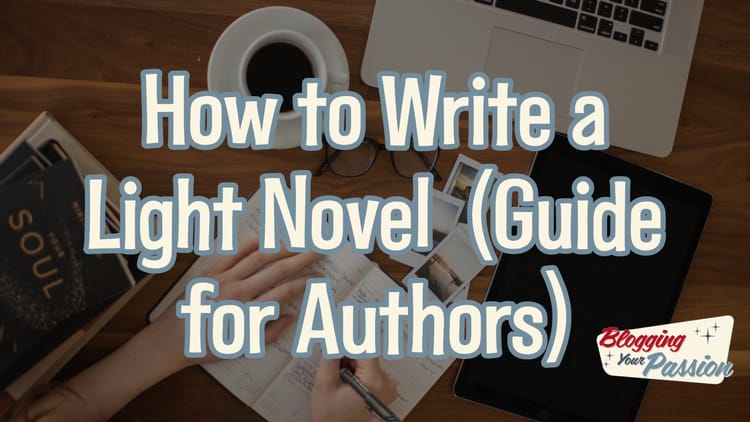How to Write a Book in a Month (Success Writing Tips)

So, you want to write a book in just one month?
Well, you're in luck because I'm here to guide you through the process step by step.
Imagine this: you have a brilliant idea for a novel, and you're bursting with excitement to bring it to life. With a little dedication and a lot of determination, you can make it happen.
In this guide, we'll explore practical strategies and techniques that will help you complete your book within a month. From creating a designated writing space to finding a community of fellow writers, we'll cover it all.
So, get ready to embark on this writing journey and achieve your dream of becoming a published author. Let's dive in!
Key Takeaways
- Choose a quiet area free from distractions
- Set aside dedicated time for writing each day
- Utilize word count trackers such as Scrivener or Writometer
- Join online writing communities or forums like NaNoWriMo
Table of Contents (click to expand)
- Designate a Writing Space
- Break It Down Into Manageable Chunks
- Utilize Writing Apps and Tools
- Find Other Writers to Write With You
- Organize via Storyboards
- Write First, Edit Later
- Create a Series of Incremental Stories
- Outline the End First
- Be in the Right Place Mentally
- Block Distractions and Try Timers
- Frequently Asked Questions
- Conclusion
Designate a Writing Space
To maximize your productivity, designate a dedicated writing space for the month. Creating a designated area where you can focus solely on your writing will increase your chances of success in the daunting task of writing a book in just one month.
The publishing industry can be competitive, and it's important to create an environment that fosters your creativity and allows you to fully immerse yourself in the writing process.
When designating your writing space, consider a quiet area where you can minimize distractions. Find a spot where you feel comfortable and inspired, whether it's a cozy nook in your home or a local coffee shop that fuels your creativity.
Make sure your writing space is well-organized and free from clutter, as a tidy environment can help clear your mind and enhance your focus.
The month of November, designated as National Novel Writing Month (NaNoWriMo), presents a unique opportunity to challenge yourself and join a community of writers all striving to complete a book in just 30 days.
By creating a designated writing space, you can fully commit to this ambitious goal and increase your chances of becoming a successful author.
In this article section, we aim to provide you with practical tips on how to create an effective writing space. Remember, your writing space should be a place where you feel a sense of belonging, where ideas flow freely, and where you can let your creativity flourish.
Break It Down Into Manageable Chunks
To ensure a successful completion of your book within the month, it's crucial to break down the writing process into manageable chunks. Writing a book in a month may seem like a daunting task, but by breaking it down, you can make it more achievable and less overwhelming.
First, consider how to draft a novel in a month. It's important to set aside dedicated time for writing each day. Creating a writing schedule can help you stay on track and ensure that you make progress every day.
Determine how many words you need to write to complete your book and calculate how many words you need to write each day to reach that goal. This will give you a clear target to aim for during each writing session.
Next, can you write a book in a month? The answer is yes, but it requires a lot of time and commitment. You may need to make sacrifices and prioritize your writing over other activities.
Setting aside specific blocks of time for writing can help you stay focused and avoid distractions.
When it comes to creative writing, it's important to find a balance between quantity and quality. While it's important to reach your daily word count goal, don't sacrifice the quality of your writing.
Take breaks when needed, step away from your work, and come back with fresh eyes to ensure that your writing is the best it can be.
Utilize Writing Apps and Tools
You can enhance your writing process by utilizing various writing apps and tools. These tools are designed to help you stay organized, focused, and motivated throughout the writing journey.
Here are four essential writing apps and tools that can support you in achieving your goal of writing a book in one month during National Novel Writing Month:
- Writing Schedule Planners: Use apps like Trello or Google Calendar to create a detailed writing schedule. Set aside specific blocks of time each day dedicated solely to writing. Having a structured plan helps you stay committed and ensures you make progress towards your daily word count goal.
- Word Count Trackers: Utilize writing apps like Scrivener or Writometer to keep track of your daily word count. These tools provide visual representations of your progress, which can be highly motivating. Seeing the numbers increase each day gives you a sense of accomplishment and encourages you to keep going.
- Writing Prompts: When you feel stuck or uninspired, turn to writing apps like Evernote or Prompts for Writers to generate fresh ideas. These apps provide creative prompts and exercises to help you overcome writer's block and keep your creativity flowing.
- Editing and Revision Tools: Once you've completed your first draft, use editing tools like Grammarly or Hemingway Editor to polish your work. These apps help you identify grammar and spelling errors, improve sentence structure, and enhance readability. By utilizing these tools, you can ensure your writing is clear, concise, and error-free.
By incorporating these best writing tools into your writing process, you'll have the support and guidance needed to write a book in just one month. Stay focused, follow your writing schedule, and utilize these apps and tools to make the most out of your writing experience.
Find Other Writers to Write With You
Collaborate with fellow writers who share your goal of writing a book in a month. Writing can often feel like a solitary journey, but finding other writers to write with you can make the process more enjoyable and rewarding.
Not only will you have a support system to lean on during the ups and downs of the writing process, but you'll also have a group of like-minded individuals who understand the struggles and triumphs of creating a book.
One way to find other writers is by joining writing communities or forums online. Platforms like NaNoWriMo, which stands for National Novel Writing Month, are designed to bring together writers who want to complete a novel in just one month.
By becoming a NaNoWriMo participant, you'll have access to a vast network of writers who are working towards similar writing goals. You can connect with others, share your progress, and even find a critique partner or writer friend who can provide valuable feedback on your work.
Another option is to attend writing workshops or conferences in your area. These events often attract debut novelists and published authors who are eager to connect with fellow writers.
By attending these gatherings, you can't only learn from experienced authors but also form relationships with writers who are at a similar stage in their writing journey.
Organize via Storyboards
One effective way to streamline your writing process is by utilizing storyboards as a visual tool for organizing your ideas and plot.
Storyboards can help you bring structure to your thoughts and ensure that you stay on track as you work towards completing your book in a month.
Here's how you can use storyboards to organize your writing:
- Start with your story idea: Begin by jotting down your main story idea in the center of the storyboard. This will serve as the foundation for your book and help you stay focused on the central theme.
- Add new ideas: As you brainstorm new ideas for your book, add them to the storyboard. You can create branches and connect them to the main idea to show how they relate to the overall plot.
- Develop your main character: Use the storyboard to flesh out your main character. Write down their name, background, and key traits. This will help you keep your character consistent throughout the story.
- Plan your next steps: Once you have a clear vision of your story, use the storyboard to outline the sequence of events. Break down your book into chapters or sections, and map out the key plot points you want to cover in each one.
By organizing your ideas and plot using storyboards, you can create a roadmap for your first draft. This visual tool will help you stay focused, ensure consistency, and make the writing process more efficient.
Now that your ideas are organized, it's time to move on to the next step - diving into the actual writing process.
Write First, Edit Later
Utilize the process of writing first and editing later to maintain momentum and focus as you work towards completing your book in a month.
When it comes to writing a book in a month, the first step is to prioritize getting your thoughts down on paper. Don't worry about perfection or making everything sound just right. The key is to write first and edit later.
Writing a rough draft without constantly editing allows you to tap into your creativity and let your ideas flow freely. Your inner editor can be quite critical and may hinder your progress if you let it have control during the writing process.
By silencing your inner editor and focusing on writing first, you give yourself the freedom to explore different ideas and experiment with your writing style.
During your dedicated writing time, make it a point to write without judgment or self-criticism. Remember, the goal is to get your thoughts out of your head and onto the page.
This is an important step in the writing process, as it helps you build momentum and stay focused on your goal of completing your book in a month.
Once you have finished writing your rough draft, you can then shift your attention to editing. Editing is a separate task that requires a different mindset than writing.
By separating these two processes, you can give each one the attention it deserves. Editing allows you to refine your ideas, improve the structure and flow of your book, and polish your writing to make it shine.
In conclusion, when it comes to writing a book in a month, remember to write first and edit later. This approach helps you maintain momentum, overcome perfectionism, and stay focused on completing your book within the given timeframe.
Create a Series of Incremental Stories
To develop a compelling narrative, consider crafting a sequence of interconnected stories that build upon each other. Creating a series of incremental stories can be a powerful approach when tackling the challenge of writing a novel in a month.
Not only does it provide structure and direction, but it also allows you to delve deeper into your characters and their journeys.
Here are four reasons why creating a series of interconnected stories can be beneficial:
- Building suspense: By ending each chapter or story on a cliffhanger, you keep your readers engaged and eager to find out what happens next. This helps to maintain their interest throughout the entire book.
- Developing complex characters: With each new story, you have the opportunity to reveal different facets of your characters' personalities and motivations. This creates a sense of depth and complexity, making them more relatable and interesting to your readers.
- Unfolding a layered plot: By gradually revealing new information and introducing new conflicts in each story, you can create a multi-layered plot that keeps your readers guessing. This adds excitement and intrigue to your novel.
- Providing a sense of progress: Writing a novel in a month can be overwhelming, but by breaking it down into smaller interconnected stories, you can track your progress more easily. Each completed story serves as a milestone, giving you a sense of accomplishment and motivation to keep going.
Outline the End First
Begin by envisioning the conclusion of your book before you embark on writing it, allowing you to have a clear direction and purpose for your story. The best way to ensure a successful writing journey is to outline the end first.
By starting with the finish line in mind, you can set goals and create a roadmap that will guide you through the writing process.
When you outline the end first, you give yourself a target to aim for, a vision that will fuel your motivation and keep you focused. It helps you stay on track and avoid getting lost in the maze of your own desires.
By knowing where your story is headed, you can make intentional choices that support your ultimate goal.
Outline the end first also allows you to implement best practices in storytelling. As you work backwards from the conclusion, you can identify the key moments and plot twists that will lead you there.
This method helps you structure your story in a way that keeps readers engaged and satisfied.
Setting a lofty goal of finishing a book in a month can be daunting, but outlining the end first can make it more achievable. It gives you a sense of purpose and direction, guiding your writing process and keeping you focused on the ultimate prize.
Be in the Right Place Mentally
When envisioning the conclusion of your book, it's important to be in the right place mentally. This means finding a mental state that allows you to fully immerse yourself in the writing process and overcome any obstacles that may come your way.
Here's how you can get in the right mindset:
- Leave your full-time job at the office: During your writing month, try to separate your work life from your creative life. Use your evenings and weekends to focus solely on your book. This dedicated time will help you stay focused and avoid distractions.
- Take a break from social media: Social media can be a major time-suck and a source of comparison. Instead of scrolling through endless feeds, use that time to write. Disconnecting from social media will allow you to be present in your own story and not get caught up in the lives of others.
- Use your lunch break wisely: If you have a day job, take advantage of your lunch break to write. Find a quiet spot, bring your laptop or notebook, and use this time to escape into your book. It's amazing what you can accomplish in just 30 minutes of focused writing.
- Seek support from your best friend: Writing can be a lonely process, but it doesn't have to be. Share your progress and struggles with a trusted friend who can offer encouragement and support. Having someone on your side can make all the difference in staying motivated and becoming a better writer.
Block Distractions and Try Timers
Blocking distractions and trying timers can greatly enhance your productivity when writing a book in a month. As a writer, it's crucial to create an environment that fosters focus and minimizes interruptions.
By blocking distractions, such as turning off notifications on your phone or computer, you can create a space that allows you to fully immerse yourself in the writing process.
Set aside designated writing time where you can be free from distractions and fully dedicate your attention to your book.
One effective technique to stay focused is to try timers. Using a timer can help you allocate specific periods of time for writing, increasing your productivity and preventing procrastination.
Start by setting a timer for a reasonable amount of time, such as 30 minutes or an hour. During this time, commit to writing without any distractions or interruptions.
Once the timer goes off, take a short break to recharge and then set the timer again for another writing session.
This method, known as the Pomodoro Technique, can help you stay motivated and maintain a consistent writing routine.
In addition to timers, it's important to identify and eliminate potential distractions in your writing environment. Find a quiet and comfortable space where you can focus without interruptions.
If you find yourself easily distracted by noise, consider using noise-cancelling headphones or playing instrumental music to create a peaceful ambiance. Clear your workspace of clutter and unnecessary objects that may divert your attention away from writing.
Frequently Asked Questions
How do I overcome writer's block?
To overcome writer's block, you need to take a break and clear your mind. Relax, go for a walk, or do something you enjoy. Inspiration will come when you least expect it.
What Is the best way to handle feedback and criticism during the writing process?
When receiving feedback and criticism during the writing process, it's important to stay open-minded and remember that it's not personal. Use it as an opportunity to grow and improve your work.
How can I stay motivated and disciplined throughout the month-long writing process?
To stay motivated and disciplined throughout the month-long writing process, you need to set clear goals, create a schedule, reward yourself for progress, and find a supportive community to keep you accountable.
What are some tips for creating engaging and relatable characters?
To create engaging and relatable characters, think about their desires, fears, and flaws. Give them unique personalities and motivations that readers can connect with. Show their growth and development throughout the story to keep readers invested.
How do I effectively balance writing with other commitments and responsibilities in my life?
To effectively balance writing with other commitments and responsibilities in your life, prioritize your time and set achievable goals. Find moments throughout the day to write, even if it's just a few minutes. Stay organized and make writing a priority.
How much time do I need to dedicate to writing each day?
Even full-time authors like Stephen King recommend writing for just 2-3 focused hours daily. But for this tight 30-day deadline, you may need to commit 5-6 mornings, lunch breaks or evenings to hit that word count. Determine a sustainable daily time frame for your schedule.
Where do I start? Facing the blank page is intimidating!
The most important thing is to start. Write the first few sentences, paragraphs or pages even if they are rough. Getting that little bit down beats waiting for the perfect opening line. You can edit later.
How detailed should my outline be beforehand?
Having some clear ideas mapped out helps, but don't overplan early on. Allow yourself room for new directions once the writing starts flowing. Feel it out chapter by chapter.
What is the best environment for productivity?
This differs for everyone! Some writers need total quiet and a closed office door. Others prefer a coffee shop buzz. Know what fuels your best work, at least for your most intense writing sessions.
How can I silence my inner critic bringing up doubts?
That pesky voice questioning if you have what it takes to write a real book in such a short amount of time is common, especially among first-time authors. But don't listen! Stay focused on your word count goals each writing session.
Is there a right way to start my manuscript?
With fiction, some say to jump right into an intense scene, while nonfiction may benefit more from an introduction. But again, there are no definite rules. Follow your instincts in crafting the first words your readers will see.
If I'm stuck, should I force myself to continue writing?
It’s good push through brief moments feeling stuck, but if you just can't make progress, a short break can work wonders. Clear your head, then try approaching from a different angle or skipping ahead to another scene.
Conclusion
So, there you have it! With a designated writing space, manageable chunks, writing apps and tools, fellow writers for support, storyboards for organization, and incremental stories for progress, you have all the tools you need to write a book in just one month.
It may seem daunting, but with determination and these tips, you'll be a published author before you know it!





